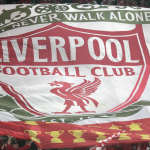THERE is a sense in which Paul Pogba is almost too talented.
He is so gifted, so good at so many things, that there was a long time when whatever position he occupied in midfield, you couldn’t help wondering whether it might not be a bit of a waste.
The question hasn’t been raised much in the past six weeks, though. Under Ole Gunnar Solskjaer, Pogba has scored five and set up four in six league games, a spell in which he’s also made nine tackles and five interceptions. Borne by the happy wind of the Solskjaer revolution, he is playing by far the best football of his United career.
Paul Pogba under Ole Gunnar Solskjaer:
Games – 7
Goals – 5
Assists – 4Unreal form #mufc pic.twitter.com/zODxPDWGDw
— United Xtra (@utdxtra) January 19, 2019
Yet the question of his position remains a key one. In the eighties, there wouldn’t have been a problem. Pogba would have been a Bryan Robson, an all-action box-to-box midfielder who specialised in goals from range or with runs from deep, but could also physically impose himself on games. But that role has effectively been phased out of football as the midfield has split into two bands.
That Pogba fits naturally into neither was evident at the Euros in 2016. At times he was used as one of the deep-lying players in a 4-2-3-1, but seemed always to be chafing against the discipline that imposed on him, always checking himself when his instinct was to get forward to support the attack.
And, while he played perfectly well, given how good he is around the box, it did seem to neglect a large portion of what makes him such a special talent. But he didn’t seem an ideal fit as a more advanced midfielder either, his touch a little heavy in tight areas, his turning circle too great for him to play comfortably with his back to goal.
And besides, that too, seemed only to use half his abilities, to remove entirely those leggy surges that can transform defence into attack in an instant.
Pogba on Solskjaer: “He is doing a really good job. As a player he knew the mentality of this club. He has come back to help us and it is going very well. The season is long so let's see how it goes.” #MUFC pic.twitter.com/43MqRgIsWe
— Manchester United (@MUFCScoop) January 14, 2019
So what do you do with him? It’s the problem numerous managers had with Steven Gerrard: some players just seem to have been born out of time. At the World Cup, two years older, Pogba accepted the more defensive duties demanded of him by Didier Deschamps, operating alongside N’Golo Kante at the back of midfield.
Jose Mourinho was impressed, leading to his comment that the World Cup, as an intense month of high-pressure games was the ideal environment for Pogba to maintain his “concentration”.
Which may have a grain of truth, but perhaps not in the way Mourinho intended. It is much easier for a player to accept an uncomfortable tactical role for half a dozen games when the World Cup is at stake.
It’s probably also easier for a player to accept an uncomfortable tactical role with his country when there is more of a sense of everybody having to fit, when the club cannot simply go out and buy the players that would create a balanced squad that allows everybody to play in a way that gets the best out of them.
Paul Pogba is getting closer to renewing his contract at Manchester United! (sport) #mufc #pogstays pic.twitter.com/CoRwIxQRzC
— Red Army! (@RedorDead07) January 21, 2019
And there clearly is a way to get the best out of Pogba. There was a reason United made him the most expensive player in the world when they (re-)signed him in 2016, which is that he had been playing extremely well for Juventus. There, in a hard-pressing side, he operated on the left side of a three-man central midfield. That gave him a slightly withdrawn starting position, so his pace and energy were still a factor, but also licence to get forward to use his creative abilities.
The logic didn’t seem to follow through to United, though. Mourinho also at time used him in a midfield three, but usually in a 4-3-3. Arguably his best game under Mourinho came in an even more withdrawn position, playing as the libero in the second half of the comeback win over Newcastle, a performance that made clear just how well he reads the game. But even in that left-sided midfield position, there were only flickers of excellence.
Under Solskjaer, though, there has been an explosion into form. So what has changed? In part, it’s the general mood at Old Trafford. The departure of Mourinho has brought a wave of relief that has elevated everybody at the club. Pogba, whose relationship with Mourinho was especially fraught, has clearly benefited from that.
✅ Most shots
✅ Most shots on target
✅ Most key passes
✅ Most duels won
✅ Assist for the winnerPaul Pogba is back#TOTMUN #MUFC pic.twitter.com/MrSOQr7FLu
— Unibet (@unibet) January 13, 2019
But there is also a tactical change. Solskjaer has tended to play a midfield three but with Pogba, on the left of it, the most advanced player. He has revelled in the freedom, not constantly fretting about what his manager may say. But he has also had a full-back going outside him, which has two effects. It gives him a passing option and it draws a defender away, creating space.
It may be that the post-Mourinho euphoria fades with time. It may be that opponents – and Tottenham aside, the last six games have not been overly taxing – start to work out ways of closing down that space and denying Pogba that freedom.
But for now, the atmosphere and the tactical set up at Solskjaer’s United have transformed Pogba into the player United thought they were getting.



